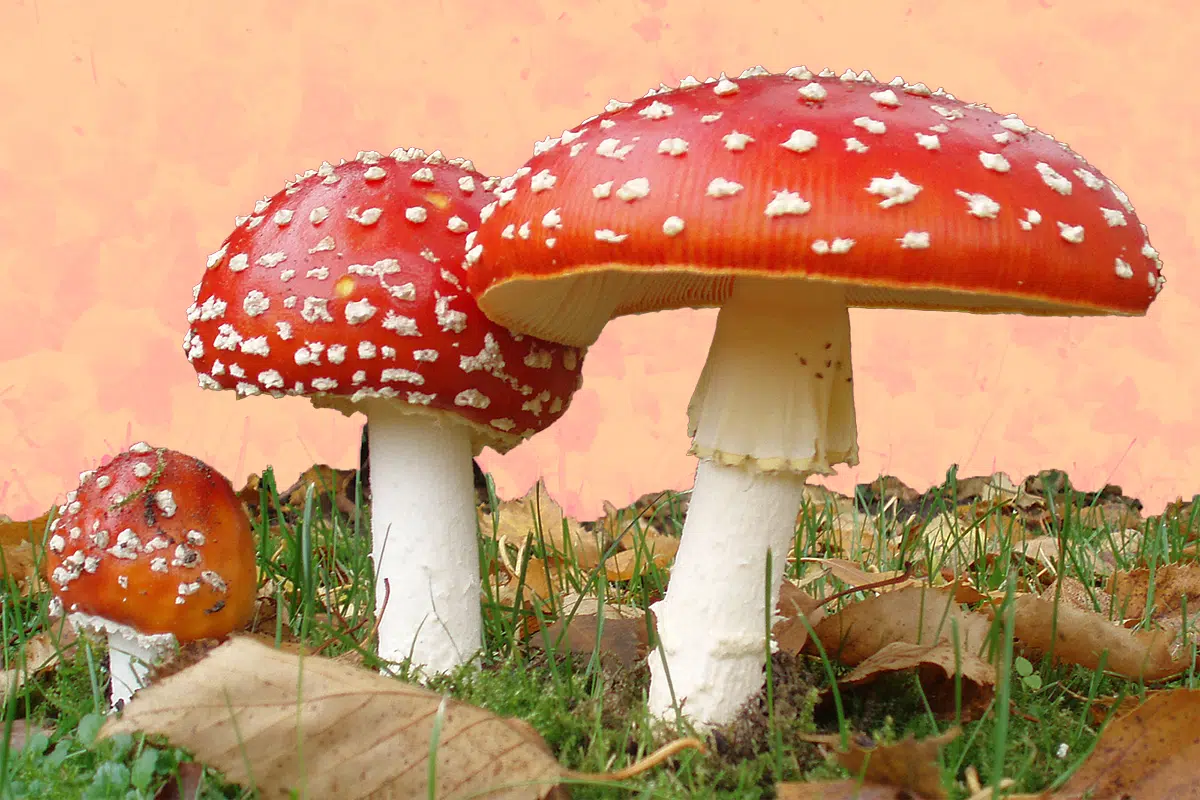The fly agaric (Amanita muscaria) is everywhere. Just this morning, I walked past a bug collection kit in Target fashioned in the image of the unforgettable red and white-speckled mushroom. It appears as garden statues, tea infusers, Halloween costumes, wrapping paper, and cell phone cases. In mass media, it features in the Smurfs, the Johnny Depp version of Alice and Wonderland, Fantasia (without its speckles or “warts”), and, in reverse—where the cap is white, and the warts are red—as the iconic Super Mario mushroom. And while most people use the phrase “magic mushroom” to refer to the far less colorful Psilocybe cubensis, discussions of that well-known psychedelic by text are almost always marked by the Amanita emoji: 🍄.
Despite this ubiquity in representation, A. muscaria is very poorly understood. Mycologist Paul Stamets dubbed Amanita “one of the most dangerous mushrooms anyone can eat.” Indeed, while people do eat this mushroom for its psychoactive effects, it poses unique safety concerns that are uncharacteristic of classical psychedelics—concerns that make having a sitter and a safe environment more important when engaging with this mushroom.
In fairy tales and psychedelic lore, A. muscaria has a coquettish and lackadaisical reputation. Commentary on A. muscaria is littered with unresolved debates, inaccuracies, speculations, and rumors. In fact, almost everything about this fungus is a bone of contention. As Andy Letcher tells us in his highly entertaining Shroom, Gordon Wasson and Terence McKenna, famous for their Psilocybe enthusiasm, lamented their underwhelming encounters with the fly agaric. In Soma, Wasson puts it this way:
Need Access to Shrooms?
Secure your supply with DoubleBlind!
“The results were disappointing. […] We felt nauseated and some of us threw up. We felt disposed to sleep, and fell into a deep slumber from which shouts could not rouse us, lying like logs, not snoring, dead to the outside world. When in this state I once had vivid dreams, but nothing like what happened when I took the Psilocybe mushrooms in Mexico.”
On the other hand, Wasson immediately thereafter records the experience of a friend whose Amanita-inspired elation “was nothing like the alcoholic state; it was infinitely better, beyond all comparison.” Other stories are less innocent—the mushroom’s been accused of inspiring the “berserk” behavior of the Berserkers, and people recount injuries sustained during Amanita trips.
The mushroom presents us with a long list of fascinating issues: its pharmacology, its cultural representation and role in folklore, and its ostensible status as an ancient religious catalyst, to name just a few. Yet, my aim here is to provide clarity or at least to show where the lack of clarity lies, concerning the most common questions about this one-of-a-kind fungus.
Watercolor, 1892 English) includes “amanita muscaria muscaria” in List II, a group of substances Article 3 says are illegal to possess, etc. Consultation of the law court’s archive to compare the law before and after officials considered the French student’s death reveals the change in statute.
In the United States, A. muscaria is legal except in Louisiana, where “It shall be unlawful for any person knowingly or intentionally to produce, manufacture, distribute, or possess with intent to produce, manufacture, or distribute a material, compound, mixture, or preparation intended for human consumption which contains a hallucinogenic.” Of note is the apparent omission of possession with intent to consume. Still, the point may be moot anyway, as Feeney highlights that “for Louisiana natives, the local psychoactive variety is Amanita persicina, not Amanita muscaria.”
There are a few other countries generally rumored to bar Amanita consumption, but their statutes are either unclear/incomplete or not widely available. The wisest course of action is to consult local laws. It’s always better to be safe than to be sorry.
Fly Agaric Resources
A great one-stop shop for all things Amanita is the aforementioned Fly Agaric compendium. For a shorter read that covers most of the bases, see Caine Barlow’s write-up on the fungus at the Third Wave. Also of interest is Hamilton Morris’ Pharmacopeia episode on Amanita and his Harper’s article on one of its constituents I didn’t cover here, gaboxadol. Inaturalist.org and Amanitaceae.org are excellent for taxonomic and identification info. Andy Letcher’s Shroom is among the best cultural histories, particularly good for un-muddying the waters of unsubstantiated Amanita mythologies so rampant in other works and online.
On the YouTube video front, Caine Barlow’s intro at Entheogenesis Australis and Rob Nelson’s StoneAgeMan coverage, Part I and Part II, are informative and entertaining. With beautiful color photos, clear and useful foraging advice is available in Wild Mushroomingby Alison Pouliot and Tom May. And, finally, consult amanitadreamer.net for information on where to buy, how to prepare, and how to use fly agaric. The site also offers a healthy dose of Amanita-centered practical wisdom.
DoubleBlind Mag Read More


